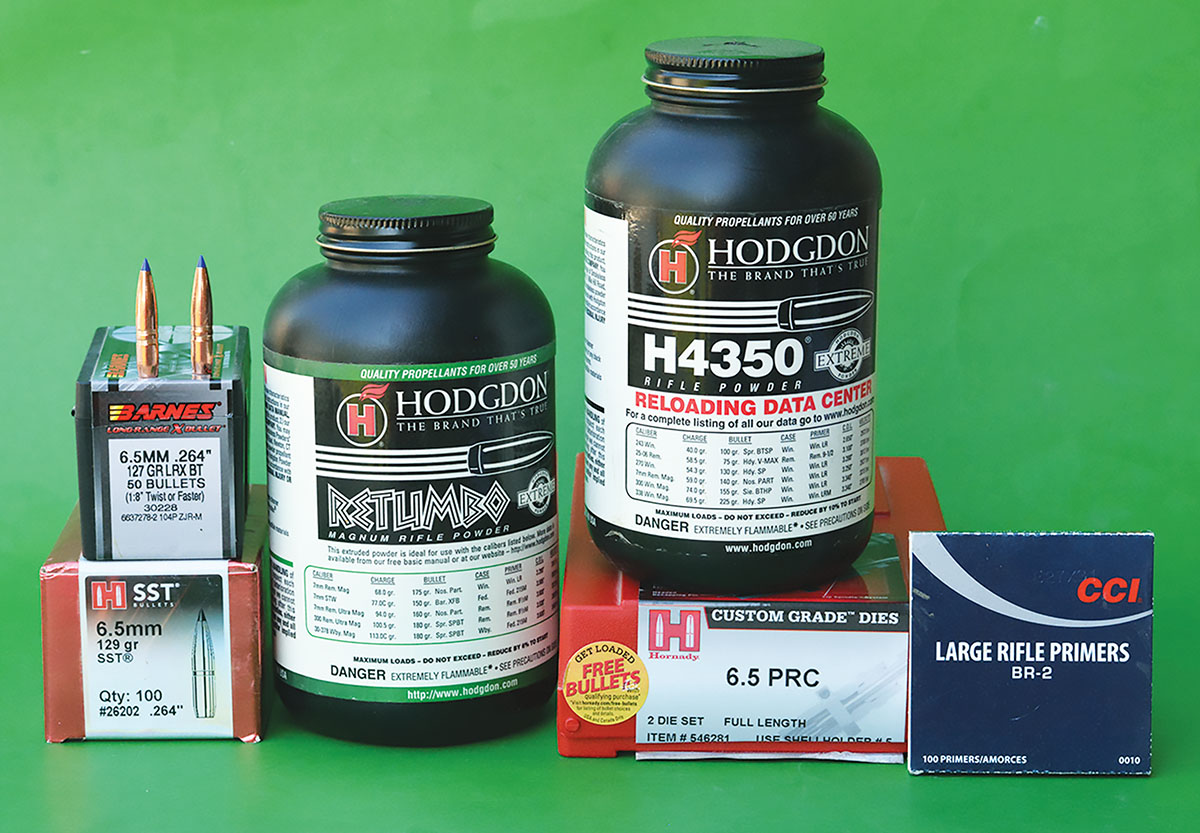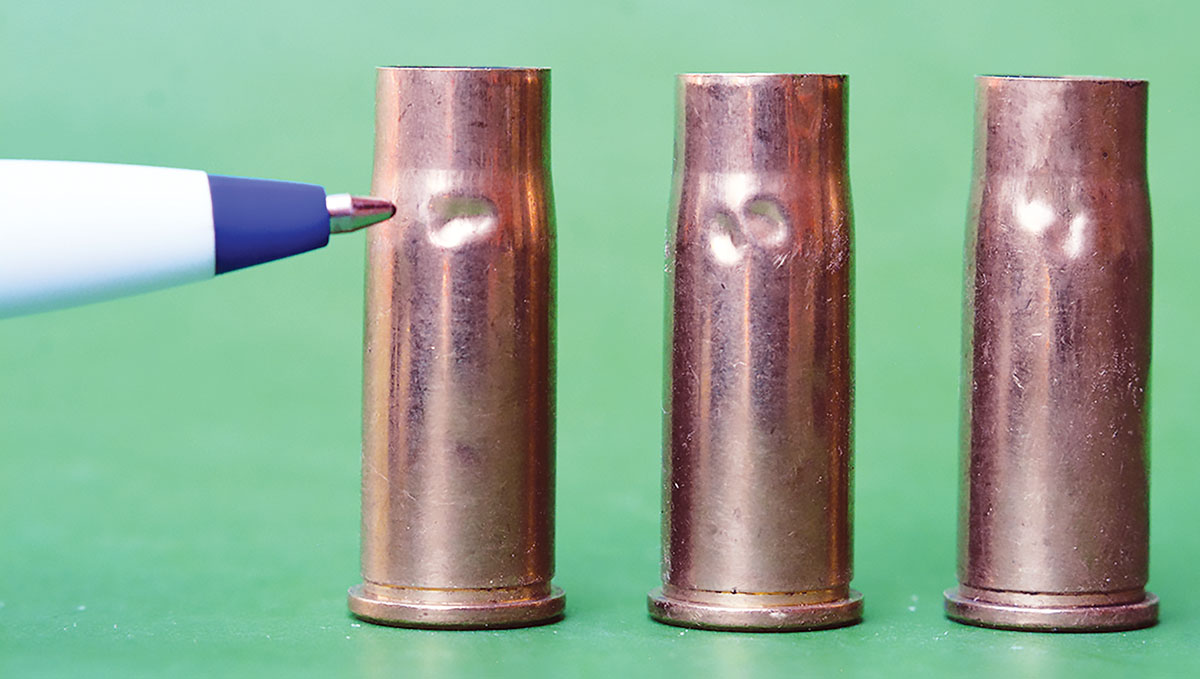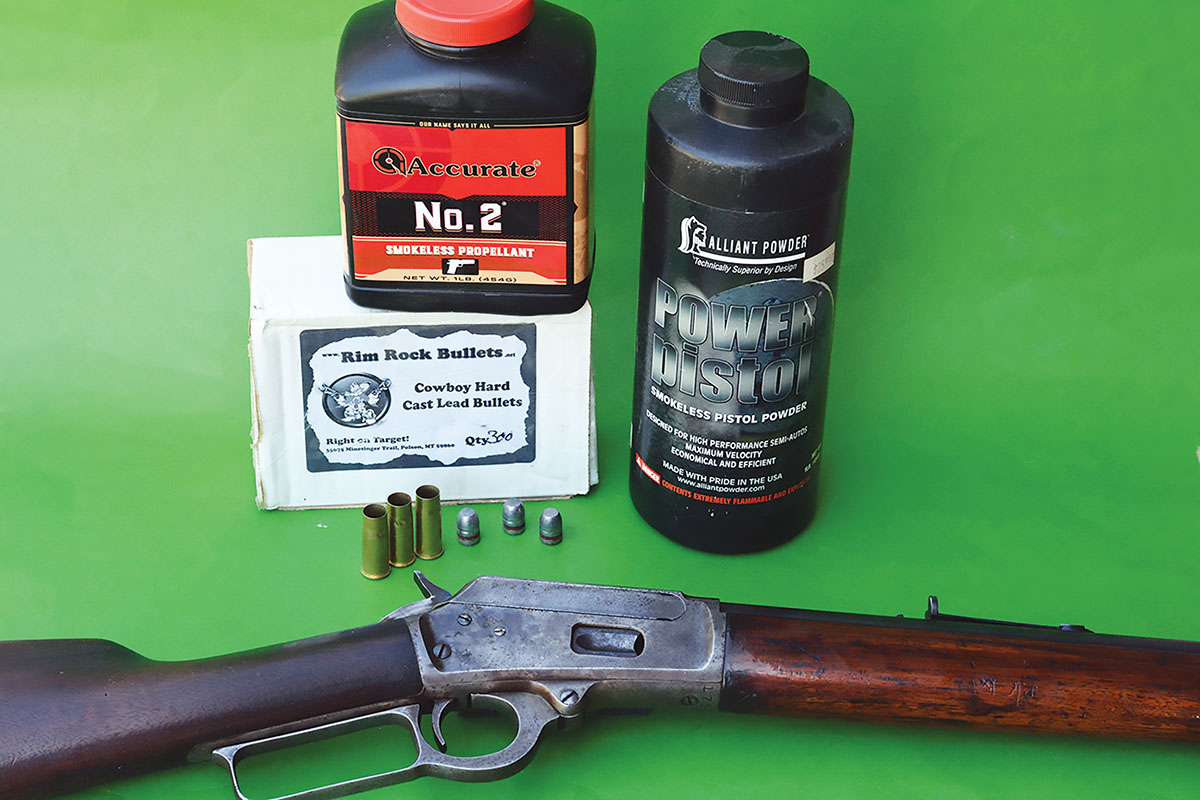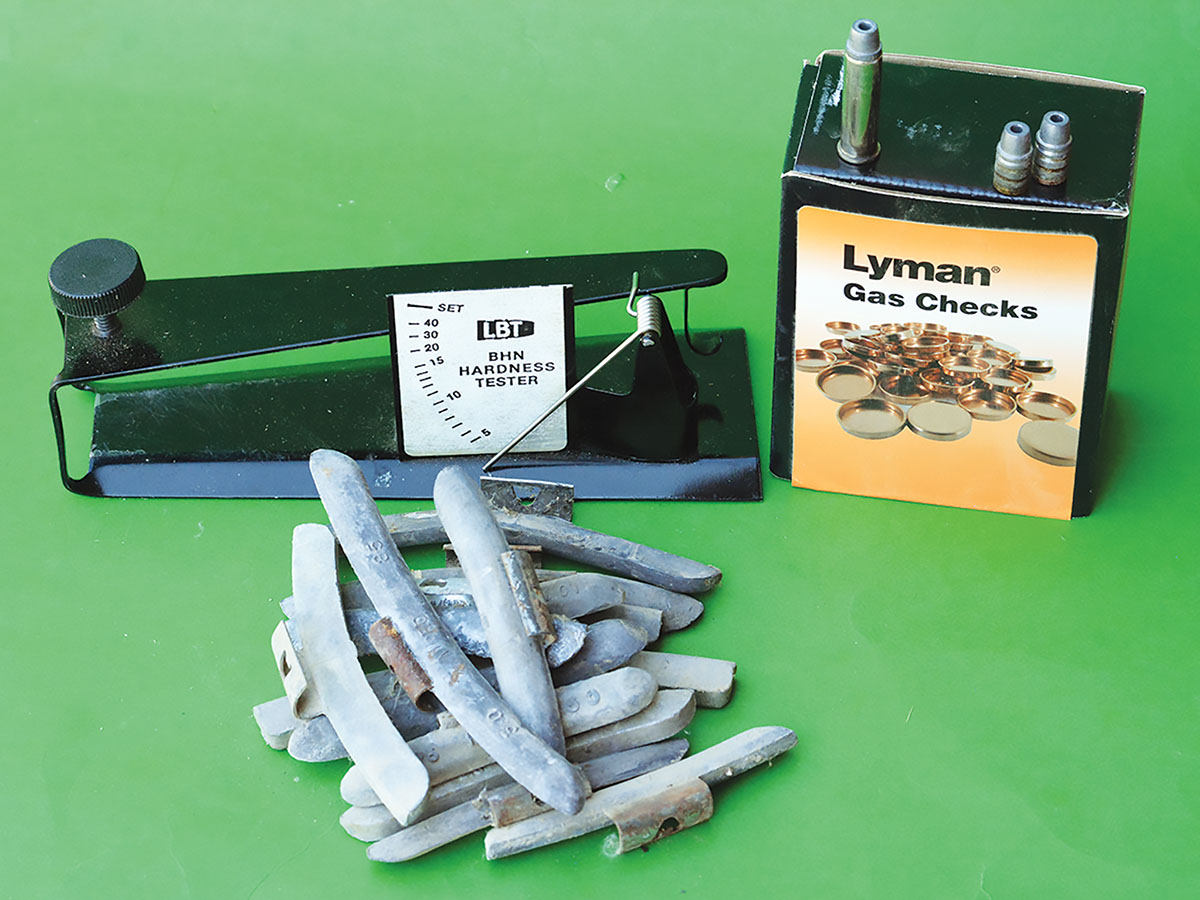Bullets & Brass
6.5 PRC Data / Mysterious Dents in My 38-40 Winchester Cases / Bullet Casting with Wheelweights
column By: Brian Pearce |

6.5 PRC Data
Q: I greatly appreciate Handloader magazine, as there is nothing else that offers high-level information for such a variety of cartridges.
I acquired a Howa 1500 chambered in 6.5 PRC, then I ordered new Hornady dies and a Hornady Handbook of Cartridge Reloading Tenth Edition. However, upon receiving my new manual, there was no 6.5 PRC data. So, I swung by my local gun store and perused through other reloading manuals from Speer, Barnes, Ramshot and Lyman and still found no data. This leads to my question – can you give me data for the 127-grain Barnes LRX bullet and the 129-grain Hornady SST? I have Hodgdon Retumbo, H-4350, Ramshot Magnum and Accurate A-4350 powders on hand, but should be able to acquire most other powders that you might suggest. I have a supply of once-fired Hornady cases sized, trimmed and ready to load. Thanks in advance for your help!
G.M., via Facebook
A: You will probably obtain the best accuracy using Hodgdon Retumbo, or H-4350 powders. Using either the 127-grain Barnes or 129-grain Hornady SST bullets, I would suggest starting with 56 grains of Retumbo and work up to 60 grains as a maximum charge, which will yield almost 3,000 feet per second (fps). Switching to H-4350, start with 50 grains and work up to 54 grains as maximum, which will reach around 3,100 fps. These loads were developed using a CCI BR-2 primer, which is a standard (non-magnum) primer. If a magnum primer is used, the maximum charges will need to be reduced.
Thank you for your compliment and taking the time to read our magazine.

Mysterious Dents in My 38-40 Winchester Cases
Q: I am experiencing a very odd problem with my 38-40 Winchester handloads. I am using 180-grain Rim Rock Cowboy RNFP bullets, loaded in Starline cases and capped with a Winchester Large Pistol primer. I am using RCBS dies and full-length sizing all cases and placing a standard roll crimp on loaded rounds. I originally started with 8 grains of Alliant Unique powder, but when that supply dried up and I have not been able to find any for sale, I switched to a published load using Accurate 5744 powder.
It seems to shoot okay; certainly good enough for the cowboy action size targets from my vintage Marlin Model 1894 rifle and Uberti SAA sixgun both in the same caliber. But I notice that as I shoot a match, the first few rounds seem to work fine, but then every few rounds a cartridge becomes very hard to chamber, but the next round might chamber easily. This happens with about 10 to 20 percent of my loads. In the first match I thought there was something out of spec with my case sizing methods, or maybe the crimp. So I loaded another batch of ammunition and ran each cartridge through my rifle to be certain that they all chambered properly, which they did.

J.T., Waco TX
A: I could not find a source for the “published data” that you reference, so I assembled some sample ammunition that duplicated your handloads and then tested them in both rifle and sixgun. It seems that you are not getting proper ignition, which is not surprising considering the low pressure associated with your load and that the Winchester Large Pistol primer gives the least heat energy of commonly available large pistol primers in the U.S.
What is happening is that the unburned extruded powder granules are staying within the bore and the chamber when the fired case is extracted and ejected. This is especially apparent when the rifle is kept to the shoulder and the muzzle is not pointed downward to allow the unburned powder to fall out of the barrel on the muzzle end! Just one or two unburned granules inside the chamber are making it difficult to chamber a new cartridge, as the case must be dented to allow it to chamber. And this explains why fired cases have dents mostly in the shoulder area.
Some of the problem might be solved by increasing your powder charge and changing to a large pistol magnum primer. However, A-5744 is not a great choice in this application. If possible, I would suggest changing to an easier-to-ignite powder. Your original load containing Unique is a true classic because it works so well! However, there are other powders that will offer excellent performance. I would suggest trying 8.5 grains of Alliant Power Pistol, 7.3 grains of Accurate No. 2, 10 grains of Accurate No. 5, 6.5 grains of Hodgdon Titegroup or 7.5 grains of Winchester 231. Generally speaking, these loads will give around 850-900 fps in sixguns and around 1,100-1,150 fps in rifles. If you cannot find any of those powders, contact me again and I will offer more data. Incidentally, you might want to thoroughly clean your chamber.
Bullet Casting with Wheelweights
Q: I am fairly new to casting bullets, but have two questions regarding the alloy for 357 Magnum bullets and occasional wrinkles on the bullets that I can’t seem to make disappear. First, I purchased a four-cavity Lyman bullet mould No. 358156. I have read that tire wheelweights are a great alloy, but other sources suggest that wheelweights are not hard enough for magnum velocities and that I should be using Lyman No. 2 alloy. The problem is that I don’t have all of the suggested hardeners to blend with wheelweights make the No. 2 alloy, but I did find a local source for tin. I will be loading full-power 357 Magnum loads using Accurate No. 9 powder. Let me know your thoughts on alloy hardness?
Now my second question. When I first begin a casting session, I accept that until the mould is up to temperature, that bullets will be wrinkled and to just put them right back into the pot. The problem is that even when I get the mould up to temperature, some bullets still have occasional wrinkles. Most commonly, bases are rounded rather than fully filled out. If I work at getting my mould hotter, the wrinkles disappear, but then I begin getting frosted bullets. I am using a Lyman casting pot with bottom pour. Any suggestions to improve the quality of my cast bullets will be appreciated. Thanks in advance.
A: First, your Lyman (Thompson designed) bullet choice is outstanding and is one of my all-time favorites for 38/44 and full-house 357 Magnum loads. Being a gas-check design, it can be cast with softer alloy and still give excellent accuracy, and neither will it lead barrels even at magnum revolver velocities. Most wheelweight alloys will have a BHN of at least 9, but some are 10 to 11 (depending on manufacturer). For comparison pure lead has a 5 BHN, while Lyman No. 2 is around 15 BHN.
Wheelweights have a smaller temperature window (when compared with No. 2 alloy) wherein they will cast perfect bullets. With that said, you can make excellent bullets, but it will take just a bit more experimenting to find the perfect combination of alloy and mould temperature.
Since you are using a bottom pour pot (rather than a ladle) I would suggest never letting the small droplet that usually forms on the pots outlet to ever go into the mould. Just wipe it away with the mould just prior to lifting the handle to begin pouring lead into the mould. Basically, the droplet has partially cooled and will cause bullet defects or wrinkles. Also, I would suggest buying a temperature gauge to more closely monitor lead temperatures and you will want to stir the pot often to keep the alloy temperature as consistent as possible. Frosted bullets indicate that the mould or metal is too hot, or possibly both. They are generally undersized and should be put back into the pot. Regarding the bases that are “rounded” – if your mould and alloy are both at proper temperatures and you are still getting rounded bases, my best guess is that you need to put on more metal on the sprue puddle. This allows metal to be pulled or drawn into the mould to fill in the bullet’s base as the alloy cools. It is also possible that your sprue plate is too tight and may not be letting air escape as the metal is being poured into the cavities. If you are still struggling to make perfect bullets, you might consider adding 2 percent tin, which will increase the BHN to around 13 and will flow easier into the mould and help prevent the wrinkle effect. You are close to making good bullets, just a little more fine-tuning and you will be there!



